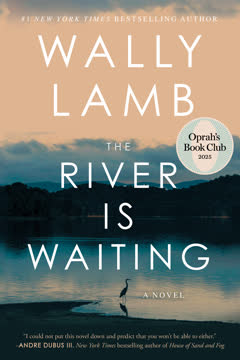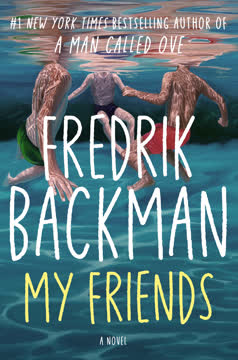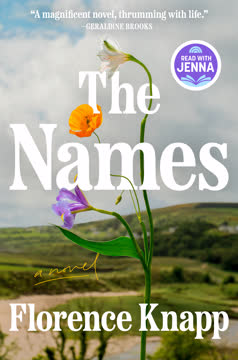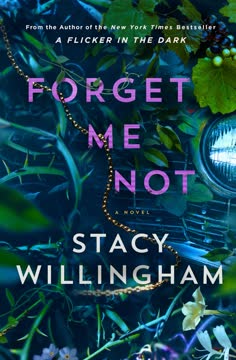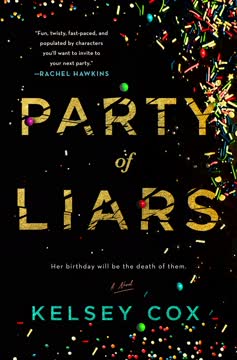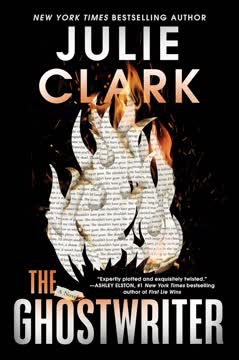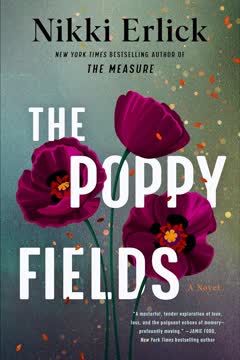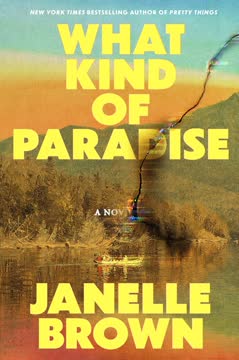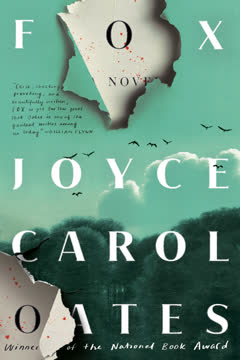Plot Summary
Morning of the Unimaginable
Corby Ledbetter, a struggling commercial artist and stay-at-home dad, begins a seemingly ordinary morning with his wife Emily and their toddler twins, Maisie and Niko. Beneath the surface, Corby's anxiety and depression are numbed by a secret cocktail of Ativan and rum. The family's dynamic is loving but strained by Corby's job loss, Emily's role as breadwinner, and Corby's growing dependence on substances. As he prepares to take the twins to their grandmother's, a moment of distraction—fueled by routine, neighborly banter, and his own foggy mind—leads to a devastating accident: Corby, believing both children are buckled in, reverses the car and runs over Niko, who had been watching ants in the driveway. The unimaginable has happened, and the world is forever changed.
Love, Loss, and Beginnings
The narrative flashes back to Corby and Emily's first meeting in a New England tourist town, their quirky flirtation, and the deep connection that quickly forms. Their relationship weathers long-distance challenges, family skepticism, and the pain of a miscarriage during a cross-country move. Despite setbacks, they marry, settle in Connecticut, and eventually welcome their twins. The joy of new parenthood is shadowed by past losses and the pressures of adulthood, but their love remains a central force—until tragedy strikes.
Marriage, Miscarriage, and Moving East
Corby and Emily's marriage is tested by the realities of career disappointments, financial strain, and the emotional aftermath of a lost pregnancy. Emily's mother's illness prompts a move back east, and the couple's resilience is further challenged by Corby's layoff and his struggle to find work. Parenthood brings both joy and exhaustion, with Corby as the primary caregiver. The couple's bond is strong but increasingly frayed by unspoken fears and the weight of unfulfilled dreams.
The Tragedy in the Driveway
The morning of the accident unfolds in excruciating detail. Corby's distracted state, the twins' routines, and the casual interactions with neighbors all converge in a moment that will haunt him forever. The aftermath is immediate and chaotic: neighbors rush to help, emergency responders arrive, and Corby is forced to confront the horror of what he's done. The narrative's pace slows to capture the agony of waiting, the desperate hope for Niko's survival, and the dawning realization of irreversible loss.
Aftermath: Guilt and Blame
At the hospital, Corby and Emily are plunged into the nightmare of losing a child. The medical staff's words are clinical, but the pain is raw and personal. Emily's mother's accusatory questions and Emily's own disbelief compound Corby's guilt. The police investigation begins, and Corby's substance use comes under scrutiny. The couple's grief is isolating and divisive, with blame—both internal and external—threatening to destroy what remains of their marriage.
The Investigation and Confession
Detectives probe Corby's actions, pressing him about his drinking and drug use. Corby's lawyer offers a way to potentially evade the worst legal consequences by manipulating the timeline of his substance use, but Corby is tormented by the idea of lying about his responsibility. Ultimately, he confesses to being impaired at the time of the accident, choosing honesty over self-preservation. This decision sets the stage for criminal charges and the unraveling of his family life.
The Weight of Grief
Corby's world contracts to the routines of grief, guilt, and addiction. He and Emily drift further apart, unable to comfort each other. Corby's mother and friends try to support him, but he is consumed by self-loathing and the fear that he will never be forgiven. The legal process grinds on, and Corby's sense of self-worth erodes. The only solace comes from fleeting moments with Maisie and the hope that, somehow, life might go on.
Prison: Survival and Shame
Corby is sentenced to prison for involuntary manslaughter. The experience is dehumanizing and brutal: he is targeted by other inmates, haunted by his crime, and subjected to the arbitrary cruelty of guards. His first cellmate is a racist bully, and Corby's days are filled with fear, isolation, and the constant threat of violence. The prison's racial and social hierarchies are stark, and Corby's guilt is both a private torment and a public mark.
Friendship, Mentorship, and Hope
Corby's fortunes shift when he is assigned a new cellmate, Manny, a flamboyant, resilient, and compassionate man who becomes his friend and confidant. Through Manny, Corby learns the rhythms of prison life and finds a measure of acceptance. Corby also becomes a reluctant mentor to Solomon, a troubled young inmate whose own trauma and violence mirror Corby's struggles with guilt and redemption. These relationships offer glimpses of hope and the possibility of healing, even in the bleakest circumstances.
Art Behind Bars
A turning point comes when Corby is asked to paint a mural in the prison library. The project becomes a lifeline, allowing him to channel his pain and longing into art. The mural, inspired by Bruegel's "Landscape with the Fall of Icarus," becomes a meditation on loss, survival, and the possibility of transformation. Through his art, Corby reimagines the prison landscape as a place of beauty and memory, embedding the stories of those he has known and lost—including Niko, Solomon, and the friends he's made inside.
Betrayal, Abuse, and Retaliation
Corby's efforts to stand up for others—especially Solomon—draw the ire of two sadistic guards, Piccardy and Anselmo. Their campaign of harassment escalates from psychological torment to sexual assault, leaving Corby traumatized and desperate. His attempts to seek justice are thwarted by the prison's culture of silence and retaliation. The abuse drives Corby back to medication, undermining his hard-won sobriety and threatening his chances for early release.
The Mural and a Flicker of Redemption
Corby's mural is unveiled to acclaim, and for a moment, he is celebrated for his talent and resilience. The project brings him a sense of purpose and the hope of a new beginning. As his release date approaches, he dreams of reuniting with Emily and Maisie, but the scars of prison—and the unresolved pain between him and Emily—cast a long shadow. The possibility of forgiveness and redemption remains uncertain.
Release Denied, Hope Lost
On the day of his scheduled release, Corby's world collapses again: a positive drug test (from lingering medication) and a moment of rage lead to a violent outburst, an assault on a guard, and the loss of his early release. The consequences are immediate and devastating: more time in prison, the shattering of his relationship with Emily, and the near-total loss of hope. The pandemic descends, bringing new dangers and isolation. Corby's health fails, and he dies of Covid-19, alone and unredeemed.
Pandemic, Death, and Legacy
Corby's death reverberates through the lives of those he touched. Manny, his loyal friend, survives and reaches out to Emily, sharing the truth of Corby's final days and the abuse he suffered. Emily, now remarried and raising Maisie, is forced to confront her own guilt and the unfinished business of forgiveness. The mural remains as Corby's legacy, a testament to the possibility of beauty and connection even in the darkest places.
Forgiveness, Memory, and Moving On
Emily scatters Corby's ashes in the river, accompanied by Maisie and Solomon, now on a path to healing. The act is both an ending and a beginning, a release of the past and an embrace of the future. Emily visits Corby's mural, speaks her forgiveness, and promises to keep his memory alive for Maisie. The river, ever-flowing, becomes a symbol of endurance, change, and the hope that, even after unimaginable loss, life can move forward.
Characters
Corby Ledbetter
Corby is the novel's central figure—a man whose life is defined by love, loss, and the crushing weight of guilt. Once a commercial artist with dreams of "serious" art, Corby's self-worth is battered by job loss, depression, and the pressures of fatherhood. His relationship with Emily is passionate but fraught, and his inability to cope with failure leads to substance abuse. The accidental death of his son Niko is both a personal and existential catastrophe, shattering his family and sense of self. In prison, Corby is forced to confront his deepest fears and failings. His journey is one of painful self-examination, brief moments of hope, and the search for redemption through art, friendship, and honesty. His legacy is complicated: a man who loved deeply, failed tragically, and left behind a mural that speaks to the endurance of the human spirit.
Emily Ledbetter
Emily is Corby's wife and the mother of Maisie and Niko. Intelligent, driven, and compassionate, she is also marked by her own wounds—family expectations, the trauma of miscarriage, and the burden of being the family's anchor. Emily's love for Corby is fierce but tested by his addiction and the tragedy that befalls their family. Her journey is one of survival, self-protection, and the struggle to forgive—not only Corby, but herself. As she rebuilds her life after Corby's death, Emily must balance the needs of her daughter, her new relationship, and the enduring presence of the past.
Maisie Ledbetter
Maisie is the daughter who lives—a bright, sensitive child whose early years are shaped by loss and confusion. Her bond with her twin Niko is primal, and his absence leaves a void she cannot articulate. Maisie's development is marked by behavioral challenges, but also by resilience and the love of those around her. She becomes the living link between Corby and Emily, and her eventual connection to her father's art and memory is a source of healing.
Niko Ledbetter
Niko's brief life and tragic death are the novel's emotional core. His innocence and vitality haunt Corby and Emily, and his absence shapes every subsequent event. Niko becomes a symbol of both unbearable loss and the possibility of spiritual connection—his presence lingers in memory, art, and the river that "waits."
Manny DellaVecchia
Manny is Corby's cellmate and the novel's most vibrant supporting character. Openly gay, irreverent, and resourceful, Manny is both comic relief and a source of genuine wisdom. He helps Corby navigate the dangers of prison, offers unconditional support, and ultimately becomes the bridge between Corby and Emily after Corby's death. Manny's own journey—from trauma to resilience—mirrors the novel's themes of survival and the enduring power of human connection.
Solomon Clapp
Solomon is a young inmate whose violent crime and psychological fragility make him both a target and a test for Corby. Their relationship is fraught with frustration, but Corby's attempts to mentor and protect Solomon are acts of atonement. Solomon's eventual transfer to a psychiatric facility and his later progress suggest that even the most broken lives can find a measure of healing.
Piccardy and Anselmo
These two correctional officers are the novel's primary antagonists within the prison. Sadistic, racist, and abusive, they exploit their power to torment vulnerable inmates—including Corby and Solomon. Their eventual exposure and downfall are a rare moment of justice in a system otherwise stacked against the powerless.
Dr. Beena Patel
Dr. Patel is the grief counselor who works with Corby and Emily. Wise, patient, and culturally attuned, she helps both characters confront their pain and the complexities of forgiveness. Her presence is a reminder of the possibility of healing, even when wounds run deep.
Mrs. Fagie Millman
Mrs. Millman is the prison librarian who encourages Corby's artistic talent and provides a rare space of dignity and hope within the institution. Her support is instrumental in the creation of the mural, and her friendship is a lifeline for Corby and others.
Corby's Father
Corby's father is a distant, critical figure whose own failures as a parent haunt Corby's psyche. Their relationship is marked by disappointment and longing, but a late letter reveals regret and a measure of self-awareness. The intergenerational wounds of fatherhood are a recurring motif.
Plot Devices
Nonlinear Narrative and Multiple Timelines
The novel's structure moves fluidly between past and present, using flashbacks to reveal the roots of Corby and Emily's relationship, the traumas that shape them, and the events leading up to and following Niko's death. This nonlinear approach deepens the reader's understanding of character motivation and the cumulative weight of loss.
First-Person Confessional Voice
Corby's perspective dominates much of the novel, offering an unvarnished look at his thoughts, rationalizations, and self-doubt. The confessional tone invites empathy but also challenges the reader to question his reliability, especially regarding addiction and guilt.
Symbolism of the River and the Stone
The Wequonnoc River is a recurring symbol of life's flow, the possibility of renewal, and the persistence of memory. Corby's "lucky stone," taken from the river, becomes a talisman of hope, survival, and the desire for forgiveness. The river's presence at key moments—tragedy, scattering of ashes, artistic inspiration—anchors the novel's themes.
Art as Redemption
Corby's creation of the prison library mural is both a personal act of healing and a form of quiet rebellion against the dehumanizing forces of incarceration. The mural's imagery—drawn from myth, memory, and the lives of those around him—serves as a testament to the enduring power of creativity and the possibility of transformation.
Institutional Critique and Social Realism
The novel uses Corby's experiences—and those of other inmates—to critique the prison system's racism, brutality, and indifference. The abuse by guards, the futility of grievances, and the impact of Covid-19 are depicted with unflinching realism, highlighting the systemic obstacles to rehabilitation and justice.
Letters and Testimonies
Letters from Corby's father, Manny, and others provide alternative perspectives and fill in narrative gaps. These documents serve as confessions, acts of atonement, and bridges between the living and the dead.
The Law of Threefold Return and Karma
The Wiccan principle that actions return threefold is woven into the narrative, suggesting that harm and healing alike reverberate beyond their immediate context. The novel's ending, with Emily's act of forgiveness and the return of the stone to the river, embodies the hope that cycles of pain can be broken.
Analysis
The River Is Waiting is a profound meditation on the consequences of a single, life-shattering mistake and the long, uncertain road toward redemption. Wally Lamb's novel explores the intersections of personal responsibility, systemic injustice, and the enduring need for connection. Through Corby's journey—from loving father to pariah, from addict to artist, from prisoner to memory—the book asks whether forgiveness is possible, and what it means to live with the unfixable. The river, ever-present, is both a witness and a promise: that life moves on, that pain can be transformed, and that even the most broken among us can leave behind something beautiful. The novel's unflinching portrayal of addiction, grief, and the failures of the justice system is balanced by moments of grace—friendship, art, and the small acts of kindness that make survival possible. Ultimately, The River Is Waiting is a story about letting go and holding on, about the power of memory, and about the hope that, even after unimaginable loss, the current of life carries us forward.
Last updated:
FAQ
Synopsis & Basic Details
What is The River Is Waiting about?
- A Father's Tragic Mistake: The novel centers on Corby Ledbetter, a stay-at-home father whose life is shattered by a moment of distraction leading to the accidental death of his toddler son, Niko.
- Guilt, Addiction, and Incarceration: Following the tragedy, Corby grapples with overwhelming guilt, a worsening addiction to alcohol and benzodiazepines, and faces legal consequences that land him in prison.
- Survival and Search for Redemption: Inside, Corby navigates the brutal realities of prison life, forms unexpected connections, confronts systemic injustices, and seeks a path toward self-forgiveness and potential reconciliation with his estranged wife and surviving daughter.
Why should I read The River Is Waiting?
- Deep Emotional Resonance: The book offers an unflinching, first-person exploration of grief, guilt, and the psychological toll of tragedy, providing a powerful emotional journey.
- Insight into Complex Issues: It delves into themes of addiction, the failures of the justice system, and the challenges of finding hope and meaning in the darkest circumstances.
- Compelling Character Arcs: Readers will be drawn into the complex lives of Corby, his wife Emily, and the diverse individuals he encounters, witnessing their struggles and moments of resilience.
What is the background of The River Is Waiting?
- Contemporary Connecticut Setting: The story is primarily set in and around Three Rivers, Connecticut, including the fictional Yates Correctional Institution, grounding the narrative in a specific, realistic environment.
- Exploration of Social Issues: The novel touches upon the impact of economic hardship (job loss), the complexities of modern family roles, and the harsh realities of the American prison system, including racial dynamics and staff misconduct.
- Author's Experience Reflected: Wally Lamb's background facilitating writing workshops in a women's prison likely informs the nuanced portrayal of institutional life and the humanity of incarcerated individuals.
What are the most memorable quotes in The River Is Waiting?
- "Suffering comes to us as an interrogator. It asks, 'Who are you?'": This epigraph sets the stage for Corby's journey of self-discovery and confrontation with his identity in the face of immense pain.
- "You put the car in reverse and stole him from me.": Emily's raw accusation to Corby encapsulates the depth of her pain and the direct link she makes between his actions and her loss, highlighting the devastating impact of his mistake.
- "You're not alone, Corby... I'm here. You're not alone.": Manny's words to Corby in a moment of profound despair offer a powerful counterpoint to the isolation of grief and prison, emphasizing the redemptive power of human connection.
What writing style, narrative choices, and literary techniques does Wally Lamb use?
- Intimate First-Person Voice: The novel is primarily told from Corby's perspective, creating a sense of immediacy and allowing readers direct access to his internal struggles, though his reliability is sometimes questionable due to his state of mind.
- Nonlinear Structure with Flashbacks: The narrative weaves between the present (post-accident and in prison) and significant past events (meeting Emily, the miscarriage, early parenthood), providing crucial context for Corby's character and the unraveling of his life.
- Symbolism and Motif: Recurring elements like the river, the stone, animals (herons, turkeys, snakes), and art are used metaphorically to explore themes of hope, despair, transformation, and the connection between the natural world and human experience.
Hidden Details & Subtle Connections
What are some minor details that add significant meaning?
- The Unused Lobster Pot: Corby hides his Captain Morgan bottle inside a lobster pot, a domestic object symbolizing a life (perhaps entertaining, shared meals) that has become unused or hidden, mirroring his own concealed struggles and the domestic facade he maintains.
- Maisie's Sad Eyes in the Photo: Corby observes a framed photo of the twins, noting a subtle sadness in Maisie's eyes even before the accident, which he later interprets as a premonition of her future as the "solitary twin," adding a layer of tragic irony.
- The Doll Covering the Toilet Paper: The "stupid doll with the crocheted skirt" that Emily's great-aunt gave her, which Corby finds the apology letter propped against, is a piece of domestic detritus that has survived "several purges," subtly highlighting the persistence of unwanted or awkward elements in their life, much like Corby's own unresolved issues.
What are some subtle foreshadowing and callbacks?
- Corby's DUI History: The early mention of Corby's previous DUI, linked to losing his job, foreshadows the later investigation into his impairment at the time of Niko's death and establishes a pattern of substance use tied to stress and failure.
- The "Wheels on the Bus" Song: Emily singing "Wheels on the Bus" with the twins is a seemingly innocent detail that becomes a painful callback after Niko's death when Corby hears Emily murmuring the same song to Maisie, highlighting the stark absence and the mother's attempt to soothe the surviving child.
- The River and the Stone: Corby's father's memory of catching a frog by the stream and the later description of the Wequonnoc river establish the river as a significant natural element, foreshadowing Corby's later return to its edge for reflection and the symbolic importance of the river stone he finds there.
What are some unexpected character connections?
- Corby's Mother and Betsy's Coordination: Despite their strained relationship, Corby's mother and Emily's mother coordinate efforts after Niko's death (watching Maisie, finding a funeral home), showing a shared maternal grief and practical response that transcends their personal animosity.
- Lester Wiggins and Solomon Clapp: The connection between the older, long-sentenced Black inmate Lester and the troubled young white inmate Solomon is revealed through Lester's son, Praise, highlighting a shared experience of the prison system's harshness and the intergenerational impact of trauma and injustice, despite their different backgrounds and crimes.
- Officer Goolsby as the Whistleblower: The seemingly subservient and easily influenced Officer Goolsby, who appears to be Piccardy's lackey, is unexpectedly revealed to be the undercover officer who gathered evidence leading to Piccardy and Anselmo's firing, subverting the initial impression of his character.
Who are the most significant supporting characters?
- Manny DellaVecchia: Beyond being a cellmate, Manny is Corby's primary source of friendship, guidance, and emotional support in prison, offering resilience and a connection to the outside world through his eventual contact with Emily.
- Mrs. Fagie Millman: The prison librarian provides Corby with intellectual stimulation, artistic opportunity (the mural), and a rare sense of dignity and belief in his potential, acting as a vital source of hope and advocacy within the dehumanizing system.
- Lieutenant Cavagnero: This older correctional officer represents a more humane side of the prison staff, offering Corby practical advice, a job opportunity, and genuine concern, contrasting sharply with the cruelty of Piccardy and Anselmo.
Psychological, Emotional, & Relational Analysis
What are some unspoken motivations of the characters?
- Corby's Need for Validation: Corby's desire to be seen as a "good father" and talented artist, coupled with his insecurity stemming from his father's disapproval and job loss, fuels his self-sabotage and later his desperate attempts to prove his worth.
- Emily's Self-Protection: Emily's decision to distance herself from Corby after Niko's death, including limiting his contact with Maisie and considering divorce, is driven by a deep need to protect herself and her surviving daughter from further pain and instability caused by Corby's actions and addiction.
- Betsy's Judgment of Corby: Emily's mother's immediate judgment and suspicion of Corby after the accident stem from her long-standing disapproval of him (leaving college, perceived immaturity) and her Type A personality's need for control and blame in the face of chaos.
What psychological complexities do the characters exhibit?
- Corby's Self-Loathing and Denial: Corby oscillates between profound self-loathing for causing Niko's death and moments of denial or rationalization (blaming distractions, minimizing his addiction), illustrating the complex psychological defense mechanisms at play in processing unbearable guilt.
- Emily's Traumatic Grief: Emily's grief is complicated by trauma and anger, manifesting as emotional numbness, physical symptoms (weight loss, hives), and difficulty reconciling her love for Corby with her hatred for what he did, highlighting the multifaceted nature of loss.
- Solomon's Cycle of Trauma and Rage: Solomon's history of abuse and neglect results in deep-seated self-hatred, expressed through self-harm, defiance, and explosive rage, demonstrating the long-term psychological impact of early trauma and the challenges of healing.
What are the major emotional turning points?
- Emily's Reaction to the Miscarriage: The miscarriage during the cross-country move is a significant emotional turning point, leaving Emily gun-shy about future pregnancies and contributing to a shift in her personality, becoming less silly and more reserved.
- Corby's Confession to Detective Sparks: Corby's decision to confess his impairment to Detective Sparks, despite his lawyer's advice, is a pivotal moment of choosing honesty over self-preservation, driven by the overwhelming weight of his guilt and setting him on a path toward accountability.
- Emily's Visit and Maisie's Wave: Emily's visit to Corby in prison with Maisie, despite her initial reluctance and Maisie's shyness, culminates in Maisie's small wave goodbye, representing a fragile but significant step toward reconnection and offering Corby a moment of profound emotional relief and hope.
How do relationship dynamics evolve?
- Corby and Emily's Estrangement: The initial passionate connection between Corby and Emily erodes under the weight of job loss, addiction, and tragedy, leading to emotional distance, separate coping mechanisms, and a struggle to find common ground or intimacy.
- Corby and Maisie's Separation and Reconnection: Corby's incarceration creates a painful physical separation from Maisie, leading to his fear of being forgotten; their eventual, albeit limited, visits and shared moments (like looking at drawings) become crucial attempts to maintain their bond across the prison walls.
- Corby and Manny's Unexpected Friendship: Corby's isolation in prison is broken by his cellmate Manny, whose initial annoyance gives way to genuine friendship, mutual support, and a bond forged through shared confinement and vulnerability, demonstrating the possibility of connection in unlikely places.
Interpretation & Debate
Which parts of the story remain ambiguous or open-ended?
- The Full Extent of Corby's Addiction: While Corby admits to overusing alcohol and Ativan, the precise severity and duration of his addiction prior to the accident, and whether it fully incapacitated him, are left somewhat open to interpretation, filtered through his own perspective and rationalizations.
- Emily's True Feelings About Corby: Despite moments of shared grief and her eventual forgiveness, Emily's ultimate feelings about Corby and the possibility of a future together remain complex and somewhat ambiguous, particularly regarding the depth of her anger and her decision to move on with Bryan.
- The Impact of Trauma on Maisie's Future: While the novel touches on the potential long-term psychological effects of losing a twin and her father's absence, the full extent of how these traumas will shape Maisie's adult life is left open, a question that lingers beyond the narrative's end.
What are some debatable, controversial scenes or moments in The River Is Waiting?
- Corby's Decision to Confess: Corby's choice to confess his impairment, thereby ensuring his conviction, is debatable from a legal strategy standpoint, raising questions about whether his honesty was an act of integrity or self-sabotage driven by guilt.
- Emily Withholding Maisie Visits: Emily's decision not to bring Maisie to visit Corby in prison, citing the environment's potential trauma, is a controversial point, debated within the narrative (Corby's perspective) and open to reader interpretation regarding whether it was protective or punitive.
- The Assault by Piccardy and Anselmo: The graphic depiction of Corby's sexual assault by the guards is a deeply disturbing and controversial scene, highlighting the brutality within the prison system and sparking debate about the nature of power, abuse, and the vulnerability of incarcerated individuals.
The River Is Waiting Ending Explained: How It Ends & What It Means
- Corby's Tragic Death: Corby does not achieve the hoped-for release and reconciliation. Instead, after losing his early release due to a positive drug test (from prescribed medication) and assaulting a guard, he dies in prison from Covid-19, a victim of both systemic failures and the pandemic.
- Legacy Through Art and Memory: Corby's mural in the prison library becomes his enduring legacy, a vibrant testament to his artistic talent and a space where his story and the stories of others are preserved. His "lucky stone" from the river is passed to Emily and Maisie, symbolizing hope and connection.
- Forgiveness and Moving On: Years after Corby's death, Emily, now remarried and pregnant, scatters his ashes in the river, finally articulating her forgiveness for him. She visits the mural with Maisie and Solomon, acknowledging Corby's pain and impact, and finding a way to integrate his memory into their lives while moving forward.
Review Summary
The River is Waiting receives mostly positive reviews, with readers praising its emotional depth, complex characters, and powerful storytelling. Many find it heartbreaking and difficult to read due to its intense themes of tragedy, addiction, and prison life. Some criticize the political elements and character development. The book explores forgiveness, redemption, and the human capacity for change. While deeply moving for many, some readers found certain aspects frustrating or overly tragic. Overall, it's seen as a thought-provoking, emotionally charged novel that leaves a lasting impact.
Similar Books
Download PDF
Download EPUB
.epub digital book format is ideal for reading ebooks on phones, tablets, and e-readers.
